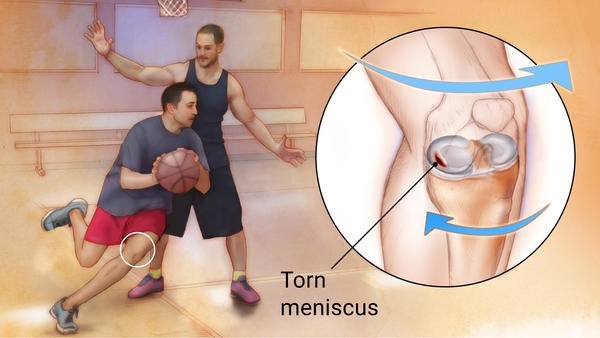
What is a Meniscus Tear?
A meniscus tear is a common injury in which forceful twisting causes certain tissue in the knee to tear. A meniscus tear occurs in the rubbery knee cartilage that cushions the shinbone from the thighbone. There are more than 200,000 US torn meniscus cases per year.
Cause
The meniscus can tear with forceful twisting or rotation of the knee.
- Pain
- Swelling
- Stiffness
- Difficulty extending the knee
- Limited range of motion
- Limping
Treatments
Treatment includes rest, ice, pain relievers, and physical therapy. Sometimes surgery may be required.
Therapies
Stretching:
Stretching exercises can improve flexibility and improve physical function.
Physical Therapy:
Restores muscle strength and function through exercise.
Medications:
Nonsteroidal Anti-Inflammatory drug which will relieves pain, decrease inflammation, and reduce fever.
RICE (Rest, Ice, Compression, Elevation):
Rest, ice, compression, and elevation. A first-aid treatment for sprains and strains.
Physical Exercise:
Aerobic activity for 20-30 minutes 5 days a week improves cardiovascular health. If injured, pursuing an activity that avoids the injured muscle group or joint can help maintain physical function while recovering.
Surgery:
Arthroscopy which is a procedure to diagnose and treat joint problems using a tiny camera inserted through a small surgical opening.
Specialists:
- Orthopedic surgeon
- Performs surgery for conditions affecting bones and muscles
- Sports medicine
- Treats and prevents sports and exercise injuries
- Primary care provider (PCP)
- Prevents, diagnoses, and treats diseases
Prevention
You can prevent meniscus tears by regularly performing exercises that strengthen your leg muscles. This will help stabilize your knee joint to protect it from injury. You can also use protective gear during sports or a brace to support your knee during activities that may increase your risk of injury.
The information provided is for general interest only and should not be misconstrued as a diagnosis, prognosis or treatment recommendation. This information does not in any way constitute the practice of medicine, or any other health care profession. Readers are directed to consult their health care provider regarding their specific health situation. Marque Medical is not liable for any action taken by a reader based upon this information.

